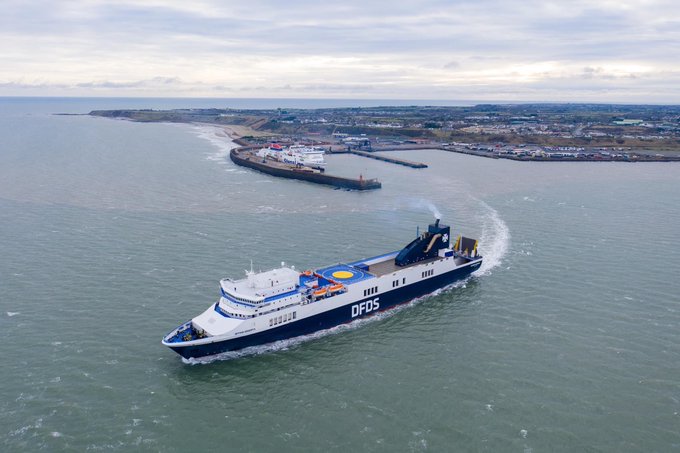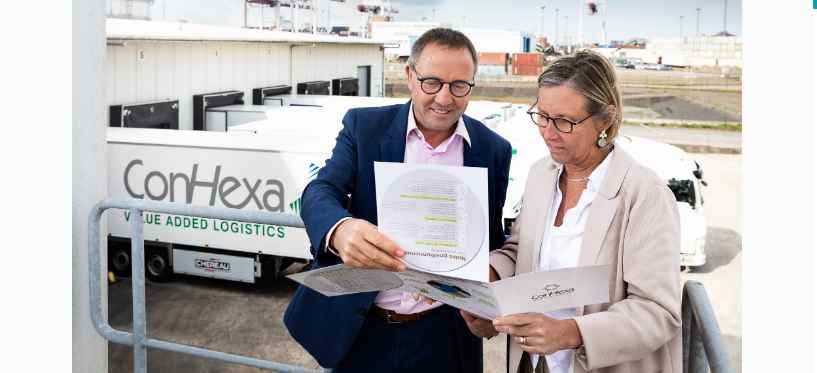
Dunkirk, major International Maritime Port

A STRATEGIC LOCATION IN EUROPE
Dunkirk Port is one of France’s large commercial ports, along the world’s busiest seaway.
- Ranked as the 7th port in the Northern Range, which runs from Le Havre to Hamburg.
- It benefits from a strategic location facing Great Britain and near Benelux because of its shared border with Belgium and its close proximity to the Netherlands.
- It is a rich, densely populated economic region with industrial and agricultural interests.
- This prime geographic location gives your company access to the regional, French and Northern European markets all at the same time.

24/7 ACCESSIBILITY
- Dunkirk Port is a deep-water seaport, on the waterfront without an estuary. It has excellent nautical accessibility. Ships can dock there 24/7.
- The port stretches over 17 kilometres of shoreline and consists of two large complementary areas:
> East Port (Port Est), behind the locks, is accessible to vessels with a maximum draught of 14.20 metres
. > West Port (Port Ouest), a tidal port, is accessible to vessels with a maximum draught of 20.50 metres. - Located a 90 minute sail from the maritime route of the Dover Strait, it is open all the time without any lock or tide constraints, thereby allowing for very short stopovers.
traffic in millions of tonnes of goods moved through the Port of Dunkirk in 2022
“liquid bulk” traffic. They represent over a quarter of the port’s overall activity in 2023.
draught in the West Port (Port Ouest) in metres
government-accredited “turnkey” industrial sites

DUNKIRK: A PORT FOR ALL GOODS
Historically known as a port for large bulk goods destined for the territory’s numerous industries, Dunkirk Port has developed other segments such as cross-Channel ro-ro traffic to Great Britain, containers, fruit, etc.
- No. 1 French port of import of containerised fruit
- No. 1 French port for rail shipments
- No. 1 French port complex with an estimated annual traffic of 100 million tonnes of goods (partnership with the ports of Calais and Boulogne-sur-Mer)
- 2nd French port for trade with Great Britain
- 3rd French port for grain traffic.
Dunkirk is a multi-purpose port providing many specialised docks and terminals.
SIGNIFICANT LAND RESERVES
The Grand Port Maritime of Dunkirk regularly invests in the development of areas specifically for logistics and industrial activities.
- Dunkirk is the only port territory to have obtained the French government’s “Choose France” quality accreditation for its 2 turnkey sites:
> Dunkirk International Logistics (DLI) is a plot of land specifically for the development of logistics activities located in the immediate vicinity of the ro-ro and container terminals.
> The Major Industries Area (ZGI) is a 125 ha site that is directly operational and designed to accommodate large industrial projects. The Major Industries Area is located in the immediate vicinity of the drinking and industrial water network, gas network and fibre optic network and has exceptional electricity connection capacities. Dunkirk Port is currently working on an eastward extension of this activity area, which will eventually double its surface area.
- More than 200 hectares for logistics are already occupied by numerous types of warehouses (dry, temperature-controlled, positive or negative cold)
- The Société de Développement Axe Nord is a company undertaking two property projects:
> 42,000 m2 dockside building, available for rent and coupled with the container terminal.
> Automated high-rise stacker crane storage facility for the cold logistics industry with 68,000-pallet capacity.

DUNKIRK: A SUSTAINABLE PORT
- The production of a Management and Sustainable Development Plan for the port area (PA2D).
- Natural area and species protection management. The Grand Port Maritime of Dunkirk has integrated efforts for the protection and enhancement of habitats.
- The modal shift towards non-road transport is over 50% in the port area.
- Solar park facilities (40 MW currently planned).
- The reclassification of port sites as solar parks (40 MW currently planned).
- Support for the construction and running of the future heat recovery network in the industrial-port area.
- Cold ironing which allows container ships in port to shut down their auxiliary engines.
- LNG ship bunkering to complement the LNG tanker loading station. The container terminal has received the “LNG Ready Terminal” accreditation.
DON’T MISS OUT ANY ECONOMIC NEWS FROM THE TERRITORY
Join the community of the most dynamic businesspeople and receive the best of our news by email.
Each month you’ll get a summary of important information for your business:
- Latest projects
- Business opportunities, professional events
- News from our member companies
- Etc…












